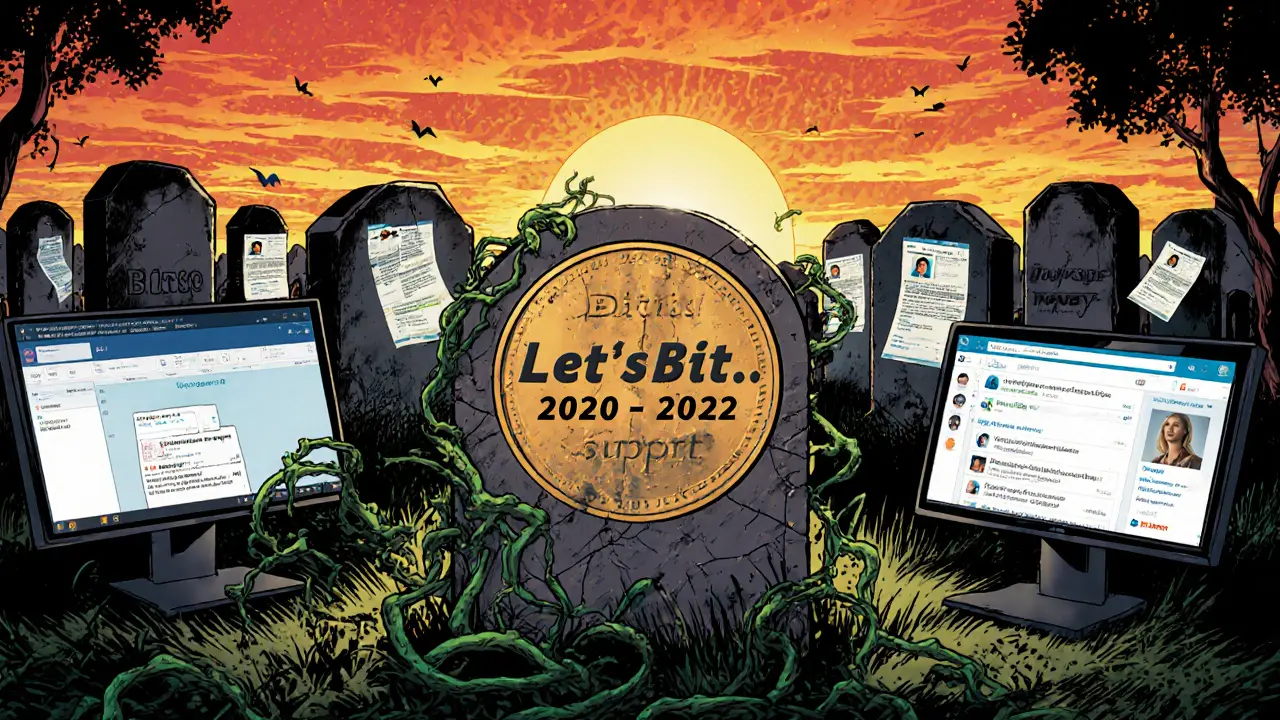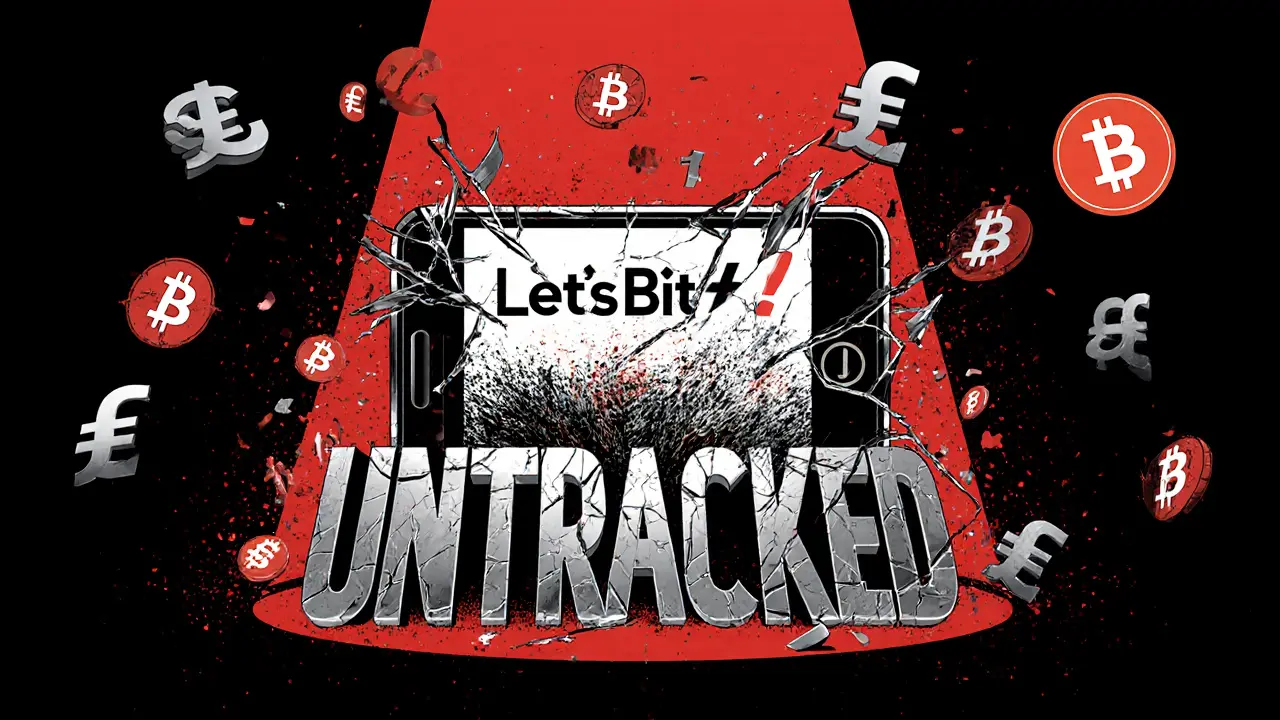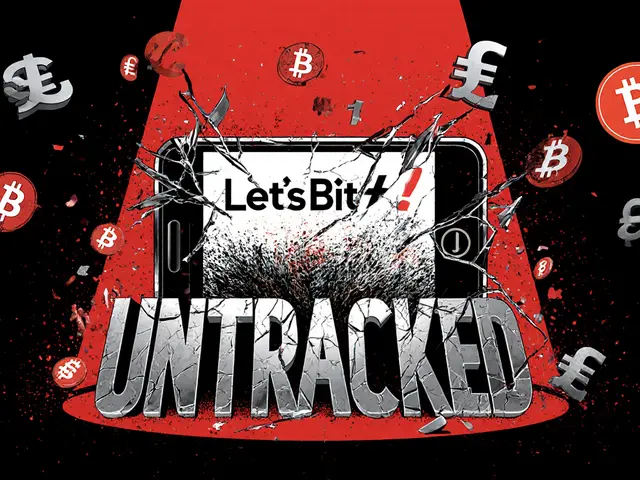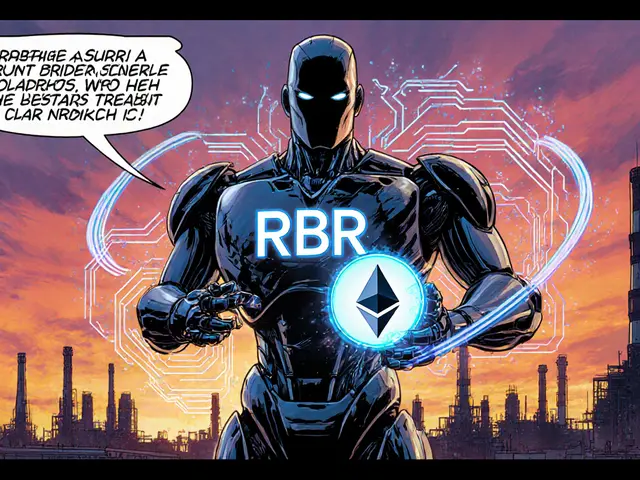Let'sBit Crypto Exchange Review: Is It Still Operational in 2025?
Crypto Exchange Verification Tool
Check Exchange Legitimacy
Enter an exchange name to verify if it meets essential safety criteria. This tool is based on the lessons from Let'sBit and other failed exchanges.
Verification Results
This exchange does not meet essential safety criteria for legitimate operations. Based on the article, exchanges like Let'sBit failed because they lacked these critical components.
Let’sBit was supposed to be the crypto exchange for everyday people in Latin America. No complicated interfaces. No foreign bank accounts. Just buy Bitcoin with your pesos, reals, or pesos - straight from your phone. It sounded like the answer for millions who’ve been locked out of traditional finance. But here’s the truth: Let'sBit isn’t a working exchange anymore. It’s a ghost.
What Let'sBit Claimed to Be
When Let’sBit launched in 2020, it promised something rare: a crypto platform built for Latin America, not just copied from the U.S. or Europe. It wasn’t trying to compete with Binance or Coinbase on global volume. It wanted to win locally. The plan? Let Argentinians, Brazilians, and Colombians deposit pesos, reals, or bolívares directly via bank transfer or local payment apps. No wire fees. No waiting days. Just trade crypto like you’d send a text. It offered spot trading, futures, and perpetual contracts - tools usually reserved for advanced traders. But the real sell was simplicity. The app had Spanish and Portuguese support. Onboarding asked for just a national ID (DNI in Argentina, CPF in Brazil). No proof of address. No notarized documents. It felt like it was made by people who’d lived the struggle.What Let'sBit Actually Is Today
Go to CoinMarketCap. Search for Let’sBit. You’ll see it listed - but under a dark gray label: “Untracked.” No trading pairs. No volume. No order books. Zero activity for over two years. CoinGecko doesn’t even list it anymore. That’s not a glitch. That’s a tombstone. The website still loads, barely. The login page is there. The “Support” button? Click it. Nothing happens. No chatbot. No email reply. No phone number. Traders Union tried reaching out in early 2025. No response in 72 hours - the industry standard for even the worst exchanges. Let’sBit’s social media accounts haven’t posted since 2022. No announcements. No updates. No “We’re back.” Just silence.Why It Failed
Let’sBit didn’t fail because it was poorly designed. It failed because it never scaled beyond a prototype. In 2021, some users reported smooth deposits and quick withdrawals. Reddit threads from Buenos Aires and São Paulo praised the app. Then, in late 2022, stories started popping up: “My funds disappeared.” “I can’t withdraw my BTC.” “The app just froze.” Trustpilot has 19 reviews. Half gave it 5 stars. The other half gave it 1. No 2s, 3s, or 4s. That’s not bad luck. That’s a pattern. The platform worked - for a while. Then it stopped. And when it stopped, it didn’t tell anyone. It just went dark. Compare that to Bitso in Mexico or Mercado Bitcoin in Brazil. Both have millions of users. Both report monthly volumes in the billions. Both have public proof-of-reserves and audit reports. Let’sBit had none. No regulatory license from Argentina’s CNV. No security audits. No insurance. No transparency.
The User Experience - If You Could Still Use It
If you somehow got into Let’sBit in 2021, the experience was clean. The app looked like a messaging app - simple buttons, big icons, no charts cluttering the screen. You could buy Bitcoin with your bank account in under 10 minutes. That’s faster than most traditional brokers. But here’s the catch: you couldn’t sell. Or at least, not reliably. Withdrawals started taking weeks. Then months. Some users reported their funds locked for over a year. Others got a refund - but only after threatening legal action. The platform never published a clear withdrawal policy. No limits. No timelines. No explanation. Mobile apps? Gone from the App Store and Google Play. No updates since 2022. If you still have the app installed, it likely won’t connect to the server. You’ll get a timeout error. That’s not a bug. That’s abandonment.How It Compares to Real Alternatives
Let’sBit claimed to be the best for Latin America. But it wasn’t even in the race. - Bitso (Mexico/Argentina): Processes over $1.2 billion monthly. Fully regulated. Public reserves. 24/7 support. App rated 4.8 on both stores. - MercaDo Bitcoin (Brazil): 5 million users. Licensed by Brazil’s central bank. Supports PIX transfers - instant deposits. - Ripio (Argentina): Dominates the peso market. Offers crypto-backed loans. Integrates with local banks. - Buenbit (Argentina): 32% market share. Simple interface. Real-time support. No hidden fees. Let’sBit doesn’t appear in any of these market share reports. Not even as a footnote. It’s not a competitor. It’s a cautionary tale.Is Let'sBit Safe to Use Now?
No. Not even close. If you’re thinking of signing up - don’t. Even if the website says “Register now,” it’s a trap. There’s no way to verify your identity. There’s no way to deposit money. And if you somehow did, you’d be risking your entire balance. Crypto exchanges need liquidity. Let’sBit had none. They need security audits. Let’sBit had none. They need customer support. Let’sBit has none. They need regulatory compliance. Let’sBit never applied. The only thing it has left is a domain name and a few old reviews. That’s not a business. That’s a digital graveyard.
What Happened to the Money?
We don’t know. And that’s the scariest part. There’s no public record of user funds being returned. No bankruptcy filing. No press release. No lawyer. Just silence. The team vanished. The servers went quiet. And the people who trusted them? They’re left with screenshots of their balances - numbers that mean nothing now. In Argentina, where inflation hits 300% a year, people turn to crypto to protect their savings. Let’sBit promised safety. It delivered uncertainty. And now, it’s gone.Final Verdict
Let’sBit was a good idea that died before it could grow. It had the right mission: make crypto simple for Latin America. But it skipped the basics - trust, transparency, and reliability. If you’re looking for a crypto exchange in Latin America today, there are dozens of better options. All of them are active. All of them have verifiable records. All of them answer their phones. Let’sBit? It’s not broken. It’s dead. And if you’re still seeing ads for it - run. Don’t click. Don’t register. Don’t even think about it.Frequently Asked Questions
Is Let'sBit still operating in 2025?
No. Let'sBit has not had any trading activity since early 2023. Its platform is non-functional. No deposits, withdrawals, or trades are possible. CoinMarketCap and CoinGecko no longer track it as an active exchange.
Can I still access my funds on Let'sBit?
There is no confirmed way to access funds. Multiple users reported their assets frozen for over a year with no response from support. The platform has no active customer service, and no official statement has been released about fund recovery.
Was Let'sBit regulated?
No. Let'sBit never obtained a license from Argentina’s CNV, Brazil’s CVM, or any other Latin American financial authority. It also never published proof-of-reserves or security audits - both standard practices for legitimate exchanges.
Why did Let'sBit fail when other Latin American exchanges succeeded?
Let'sBit focused on speed over sustainability. It skipped compliance, ignored liquidity, and failed to build long-term trust. In contrast, exchanges like Bitso and Ripio partnered with banks, published audits, and maintained 24/7 support - all essential for survival in a volatile market.
Are there any alternatives to Let'sBit for Latin American users?
Yes. Bitso (Mexico/Argentina), Mercado Bitcoin (Brazil), Ripio, and Buenbit are all active, regulated, and trusted. They support local payment methods, have mobile apps, and offer customer support in Spanish and Portuguese.
Should I trust reviews that say Let'sBit is "good"?
Be cautious. Trustpilot shows a polarized rating - half 5-star, half 1-star. This pattern suggests the platform worked briefly for early users, then collapsed. Positive reviews are likely from 2021 or earlier. Recent reviews are almost all negative. Don’t rely on old testimonials.








Let'sBit was never real. Just a front for some guy in a basement with a fake API and a Shopify store. I saw the same script on three other 'Latin crypto' sites last year. They all died the same way.
It's wild how many of these 'local crypto heroes' pop up in emerging markets. They nail the marketing-simple UI, local language, no paperwork-but skip the actual finance stuff. No audits, no compliance, no liquidity. It's like building a Ferrari with a bicycle chain. Looks cool until you try to drive it.
I remember when Bitso launched their first API. They spent six months just talking to banks. Let'sBit? They spent six weeks making a TikTok ad. The difference is obvious now.
People in Argentina and Brazil aren't stupid. They know crypto is risky. But they trusted Let'sBit because it felt personal. And that's what made the betrayal hurt more.
This isn't just about lost funds. It's about trust in a system that's already fragile. When a platform like this vanishes, it doesn't just take money. It makes people afraid to try again.
And now? Every new exchange in the region has to prove it's not another Let'sBit. That's the real cost.
Man I remember using Let'sBit back in 2021, it was so easy to buy BTC with my UPI. No hassle, no waiting. Then one day it just stopped working. I emailed them like 10 times. No reply. I even called the number they had listed. It was disconnected. I still have the app on my phone. It opens but says 'server unreachable.' Feels like a ghost story.
But hey, I learned my lesson. Now I only use Bitso. They actually answer emails. Even on weekends. Crazy right?
I'm not surprised. The moment I saw they had no public reserves or audit trail, I walked away. You don't need to be a crypto expert to know that if an exchange doesn't publish proof of solvency, it's playing Russian roulette with your money.
And the silence? That's the real red flag. Legit companies mess up. But they at least try to fix it. Let'sBit didn't even try.
Let’sBit didn’t fail because of poor execution-it failed because it operated in the epistemological vacuum of performative fintech. The UI was a symptom of a deeper ontological collapse: the illusion of accessibility without structural integrity. It weaponized cultural familiarity to mask systemic vacuity.
It’s not a ghost. It’s a metaphor. A monument to the neoliberal fantasy that technology alone can bypass institutional trust. But crypto isn’t magic. It’s accounting. And accounting requires transparency. Let’sBit had none.
The users didn’t lose money. They lost faith in the possibility of equitable financial inclusion. And that’s a loss no blockchain can recover.
Wow so let me get this straight some dumbass startup thought they could outdo bitso with a potato app and no license and now people are shocked
lol
go back to your crypto bro discord
Actually, I think Let'sBit was a great idea but they failed because they did not understand the importance of KYC compliance and AML standards. In India, we know that without proper regulation, any platform is just a Ponzi waiting to happen. They should have partnered with RBI-approved payment gateways. That's the only way.
Also, they should have used blockchain analytics tools like Chainalysis. That would have prevented fraud.
And they should have hired a CTO from Coinbase. That's basic.
Let'sBit was a scam and everyone who used it was an idiot for trusting a no-name app with no license
end of story
Have you considered that Let'sBit was shut down deliberately by the U.S. Treasury to eliminate competition for centralized exchanges? The timing matches the Crypto Enforcement Task Force's expansion into LATAM. The silence? That's not abandonment. That's a gag order.
The real victims aren't the users. They're the people who still believe in decentralization.
I know it's hard to hear but sometimes the best thing you can do is walk away. Let'sBit was a lesson, not a loss. The fact that you cared enough to try means you're still thinking about your future. That's worth more than any BTC balance.
Keep learning. Keep asking questions. And next time, check for audits. Always.
Let'sBit didn't die because it was bad-it died because it was too human. It tried to be the friend you could trust with your last pesos. And when it failed, it didn't just break your trust. It shattered the illusion that fintech could be kind.
Bitso and Ripio? They're corporations. They have lawyers, compliance officers, and PR teams. Let'sBit had a guy in Medellín who coded the app between coffee breaks.
We don't mourn failed startups. We mourn broken promises. And Let'sBit promised safety. That's why it hurts.
Bro I had 0.5 BTC on Let'sBit 😭😭😭 I was gonna buy a motorcycle with it. Now I'm riding a bicycle in the rain. And the worst part? I still get their emails. 'Hey! New feature coming soon!' Bro I can't even log in. Stop emailing me. I'm not your customer. I'm your ghost.
Also if anyone has a way to recover my funds DM me. I'll give you 20% 🙏
Always check if an exchange has a public proof-of-reserves report. Always. Even if the app looks beautiful. Even if the team seems nice. Even if your cousin says it's safe.
Let'sBit didn't have one. Neither did FTX. Neither did Terra. The pattern is clear: no audit = no trust. No trust = no future.
And if the website says 'register now' but has no contact info? That's not a platform. That's a honeypot.
Don't be the next person in the comments saying 'I lost everything.' Check the audits. It takes 2 minutes.
Let'sBit was a mirror. It showed us what happens when you prioritize aesthetics over accountability. In Latin America, where trust in institutions is already thin, crypto was supposed to be the alternative. But when the alternative turns out to be just as hollow? You don't just lose money. You lose hope.
That's why the silence is louder than any bankruptcy filing.
Just because the website loads doesn't mean it's alive. I've seen this before. The domain is still registered. The server is still running. But the people? Gone. That's not a technical issue. That's a moral one.
If you're going to handle people's money, you owe them more than a login page. You owe them honesty. Let'sBit didn't just vanish. It abandoned them.